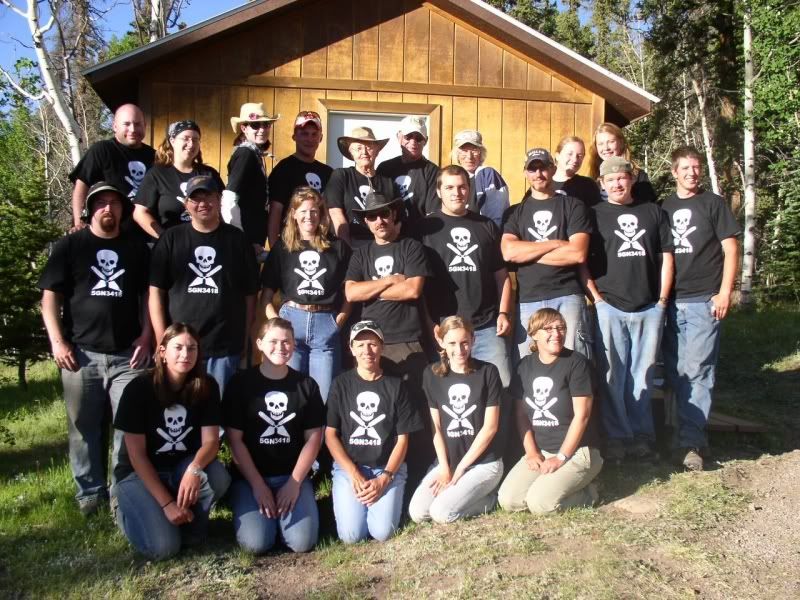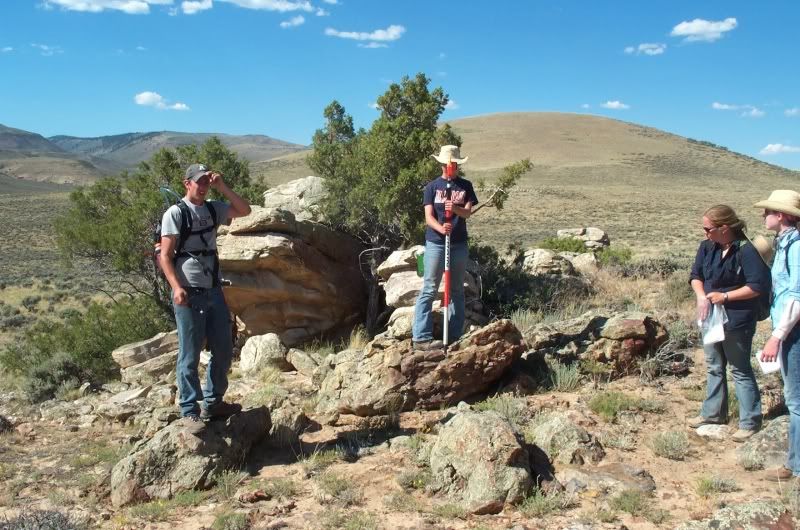Archaeological Digs' Field School Pick of 2009: Investigating Paleoindian Sites in the Mountain West
2007 field crew, which included students from all over the country.
Combine beautiful scenery, the adventure of hiking and camping, cutting-edge research at Paleoindian sites dated thousands of years before the coming of 19th century settlers, and one of the most comprehensive archaeological field schools ever devised, and you have Archaeological Digs' Pick of 2009 for archaeological fieldwork experiences: The Utah State University 2009 Archaeology Field School, otherwise known as the "Rocky Mountain High" field school.
Open only to serious, matriculated students of archaeology, anthropology, and related fields, it has operated for nearly a decade, and it has become increasingly popular because students gain a broad range of experiences that most other field schools do not offer. In summer 2009 this will be truer than ever before.
The summer 2009 field school will encompass most of the summer. Rather than simply working in a 1X1 m excavation unit for a few weeks and then heading home, students will participate in every element of a robust archaeological research program, starting in the field, and concluding with artifact analysis and the write-up of results.
Participants will earn 8 credits: 5 for "archaeology field school" (Anth 5310) and 3 for "archaeology lab” (Anth 5310). These credits have always readily transferred to other universities and colleges, for students who join from institutions other than USU. To earn the credits, students will work four 10-day sessions in the field and two 10-day sessions in the archaeology lab on the USU campus.
Principal Investigator Bonnie Pitblado and field school participant Eric Giese record a site located during a field school survey in the Gunnison Basin, Colorado. This site is located at an elevation of about 10,000’ above sea level.
The first three 10-day sessions will be based in the Gunnison Basin of Southwest Colorado. There, with National Science Foundation support, students will learn to conduct archaeological surveys and will participate in a geoarchaeological project that involves recording prehistoric stone quarries. The P.I. (Principal Investigator, which equals Project Director)) and other project personnel are developing geochemical techniques to fingerprint quartzite (as we currently do obsidian), and students will help collect the samples needed to characterize the range of quartzite in the
2007 field school students record a quartzite quarry site in the Gunnison Basin, Colorado. 2009 field school participants will also record quarry sites—and take a lot of quartzite samples for later geochemical analysis.
The fourth 10-day session will again be field-based, but this time the team will move to a Paleoindian (11,000 - 8,000 year-old) site in southeastern
The final two 10-day sessions will be lab-based, and will convene in the USU archaeology lab. Here, students will learn what most field school participants never do: how to process (curate) finds, analyze them, manipulate the data gathered, and write-up reports of field work. Students committed to careers in archaeology may opt to go one step further, presenting elements of the fieldwork at the fall 2009 Rocky Mountain Anthropological Conference, an experience that can bring the work full circle (and provide wonderful networking opportunities for job- and grad program-seekers). Conference participation is optional, and something students can decide to do or not do over the course of the summer's work.
This experiential learning activity will afford a valuable set of skills matched by few other field schools. If you are a current student and you are interested in this opportunity, you can find more detailed information about the field school and how to apply by going to www.usu.edu/anthro/intothefield.html.
Labels: archaeology field schools in north america, paleoindian archaeology, prehistoric indian archaeology field school, usu archaeology field school






1 Comments:
This comment has been removed by the author.
Post a Comment
<< Home